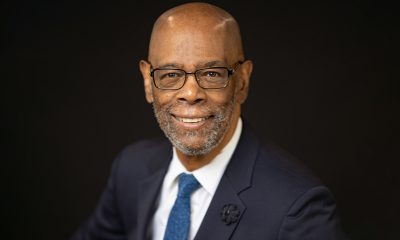Op-Ed
Black Consumer Power Still Matters

By Cheryl Pearson-McNeil
NNPA Columnist
It’s my pleasure to introduce you to Resilient, Receptive and Relevant: The African-Consumer 2013 Report. This is Nielsen and the National Newspaper Publishers Association’s third comprehensive, in-depth report on African-American consumers. I along with Cloves Campbell, chairman of the NNPA; Rev. Jacques DeGraff who is the co-chair of Nielsen’s External African-American Advisory Council, officially released the report at a press conference during the Congressional Black Caucus Foundation’s 43rd Annual Legislative Conference in Washington, D.C.
Since I have been writing this column, you’ve seen me repeatedly write about our tremendous buying power and how we need to use that power wisely. Well, guess what? That buying power sees no signs of slowing down. Black buying power is on the rise; and is expected to reach $1.3 trillion by 2017[1]. That’s some serious economic clout. How and where we use it is explained in this year’s report, with an even more thorough picture of the African-American consumer.
There is so much valuable information; we can’t possibly digest it all in one sitting. So, in the coming weeks, I’ll help explain this report section by section. So, this week, let’s start with our strength in the U.S. population – the demographic information.
On average, our population is three years younger than other demos – 35 compared to 38, which is a coveted age for marketers. Our population numbers have grown 64 percent faster than any other group in the country since 2010, which includes people who claim Black and another race. That’s 43 million Black people, or 14 percent of the entire population – the largest racial minority in the United States. The Black population remains the largest racial minority in the United States; Hispanic is an ethnic identity, not a race.
Blacks live all over the country, mostly in or around large metropolitan areas such as New York City, Atlanta and Chicago. But, 55 percent of us live in the South. And here’s an interesting fact about Blacks who moved to the South: 40 percent were adults, ages 21 to 40. So, the Southern migration is not limited solely to older retirees. Now, you all know I love Beyoncé’s “Girls Run the World.” And as a matter of fact, we do! Black women are a force to be reckoned with, representing 52 percent of employed Blacks, controlling 43 percent of the $1 trillion current, collective African-American spending power, and owning the majority of Black businesses. The insights in this report do, indeed, show that we are a resilient group, but the report also documents our ability to thrive through tough economic times.
Seventy-three percent of Whites and 67 percent of Hispanics believe that Blacks are a great influence on popular culture. Think about it, music (e.g. jazz, blues & hip-hop), clothes language (e.g. slang), gestures (e.g. “Fist bumps,” that are to the Obamas, and they are also known as “daps”).
Education is important to us. The number of African-American college graduates was up 9 percent between 1990 (11 percent) and 2010 (20 percent). And, in a myth-shattering revelation, the report shows that we spend 44 percent more time on education and career sites than the total market consumers. Did you know that we read financial magazines such as Forbes, Fortune and Black Enterprise, 28 percent more than other consumers? And, we spend an average 87 minutes on finance and investment websites. That’s 12 percent more than other groups. On the flip side, we could catch up in the actual purchase of mutual funds, first mortgages and stocks. But, the curiosity is there, which helps illustrate to financial institutions that there are opportunities to market and create more awareness about services to Black audiences.
Now, we are just getting started so stay tuned. You can also find a four-page copy of the report in the coming weeks, inserted into your NNPA newspaper. Check it out and let us know what you think. Okay, so, I’ve been doing all the talking here for the last three years, but I want to hear from you. Talk to me and let me know what you think. Let’s keep the conversation going.
Cheryl Pearson-McNeil is senior vice president of Public Affairs and Government Relations for Nielsen. For more information and studies go to http://www.nielsen.com. Follow Us on Twitter @NielsenKnows #AAConsumer13. Like us on Facebook: wwwfacebook.com/NielsenCommunity.












































